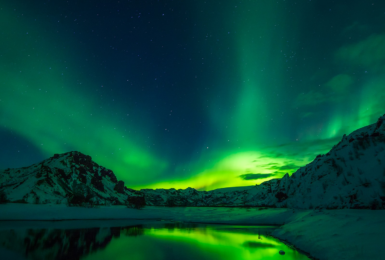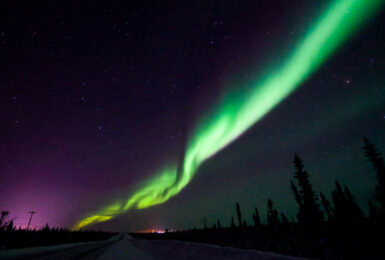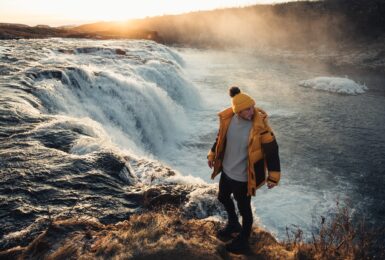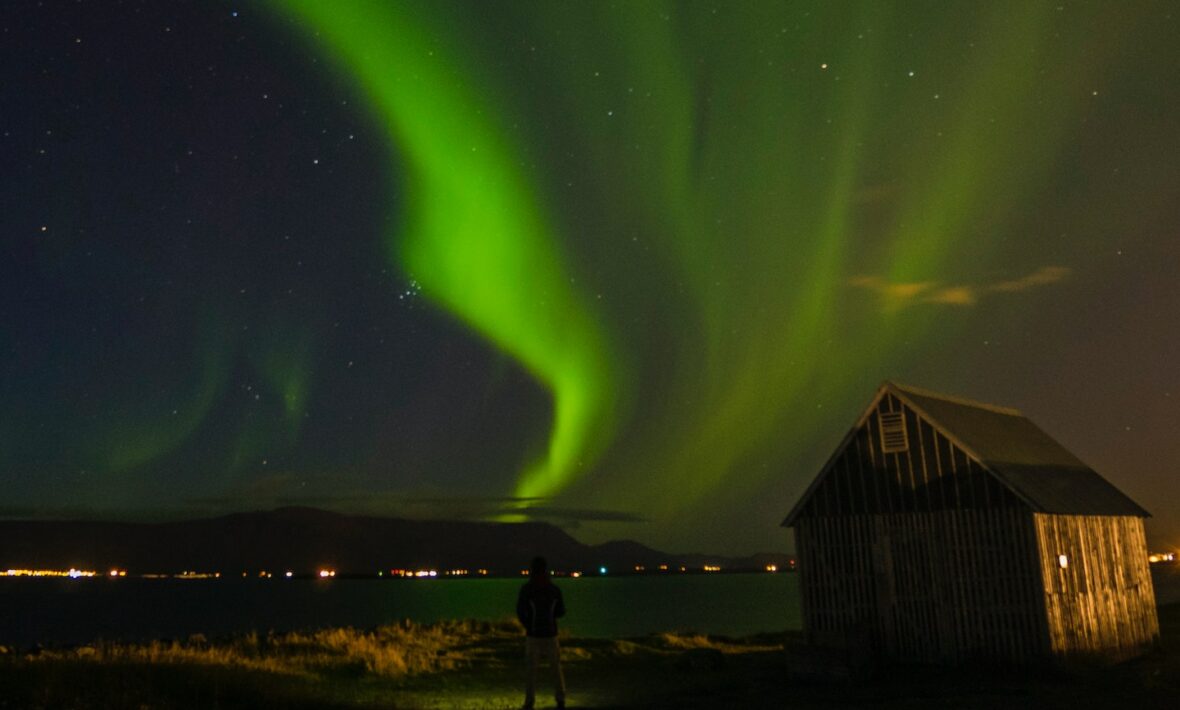
Iceland. This stunning country is known for its otherworldly landscapes, black beaches, raging waterfalls and… being of the best places in the world to see the Northern Lights. Also known as Aurora Borealis, the Northern Lights are created when electrically charged particles interact with the atmosphere on the Earth.
Before booking your trip to Iceland, there are many things you should consider to increase your chances of seeing the elusive lights during your trip. If you’re not sure where to start, here’s our guide on the best times to see the Northern Lights in Iceland throughout the year…
When is the best time of year to see them?
Located on a high latitude, Iceland is the perfect place to spot the beautiful Northern Lights, at the right time of year that is. From April to August, Iceland experiences ‘midnight sun,’ where there are no hours of darkness. This means that you won’t be able to see the Northern Lights during these months since it doesn’t get dark at night.
This means that the best months to see the Aurora Borealis in Iceland are during the darker months from late August to mid-April. This 8-month period is considered Northern Lights season. There are more hours of darkness, giving you a better chance of seeing those vibrant colours dance across the sky. Dreamy.
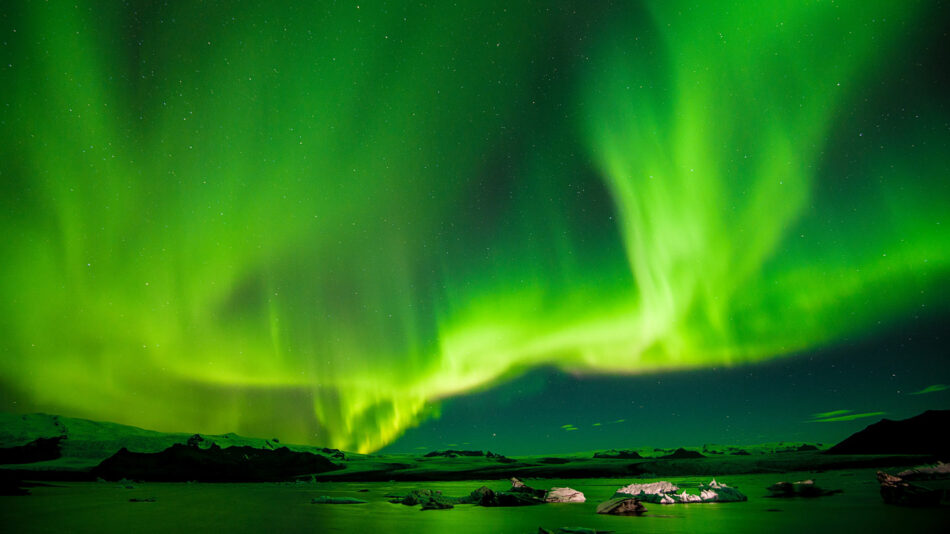
Image source:v2osk / Unsplash
What are the best conditions for seeing the Northern Lights?
To increase your chances of seeing the Aurora Borealis in Iceland, you’ll also need the perfect weather conditions. It can be a bit difficult to catch the Northern Lights if you don’t have clear dark night skies. Having less clouds in the sky, increases your chance of experiencing the full light show.
But it’s the solar activity that will have the bigger effect on your chances of seeing the Northern Lights in Iceland. The sun runs through an 11-year cycle, where the Aurora Borealis get brighter and more defined in the sky during a solar maximum. The next solar maximum is in 2024 (so get booking!).
In 2020, we’re in a solar minimum, meaning that the Northern Lights still appear and sparkle, and are a little bit easier to predict. During a solar minimum, every 27 days the sun rotates, shining stronger sun blasts, also known as solar winds, towards Earth. This means that every 27 days you’re likely to find stronger Northern Lights, helping to predict solar activity and improve your Northern Lights hunt game.
The one exception to this would be a solar storm, which are unpredictable and more erratic. These tend to happen closer to solar maximums.
Either way, your best bet will be to check the Aurora Borealis forecast before heading out, which will help predict the solar activity anticipated for the night.
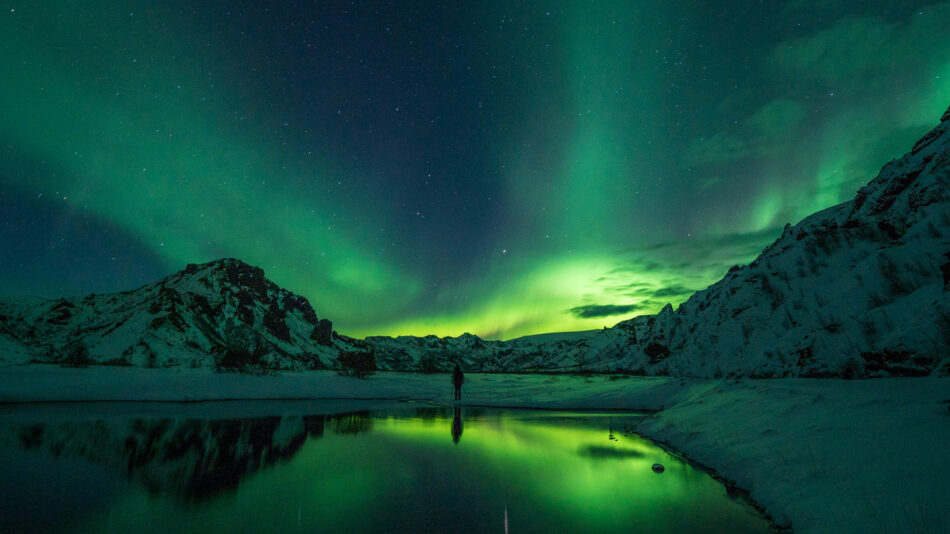
Image source:Jonatan Pie / Unsplash
Where are the best places to see the Northern Lights?
The Northern Lights can be seen from most places in Iceland, but if you want to increase your chances of seeing them try driving outside of city centres. Reykjavik has higher levels of light pollution, which can limit your chances of seeing the auroras. There are tons of Northern Lights tours available to help you get the most of your visit to Iceland, including a few that offer tips and tricks on how to photograph the Northern Lights.
Some amazing spots to see the Northern Lights include the village of Vik, which is famous for their black sand beaches, or Thingvellir National Park, a UNESCO World Heritage Site. You can even see the Northern Lights from the famous geothermal Blue Lagoon.
So, if you’re thinking of visiting Iceland, why not try to witness the Northern Lights during your trip? Seeing the Northern lights in Iceland will make for some great memories and is truly a once-in-a-lifetime experience. Or check out our ultimate guide to seeing the Northern Lights around the world.

